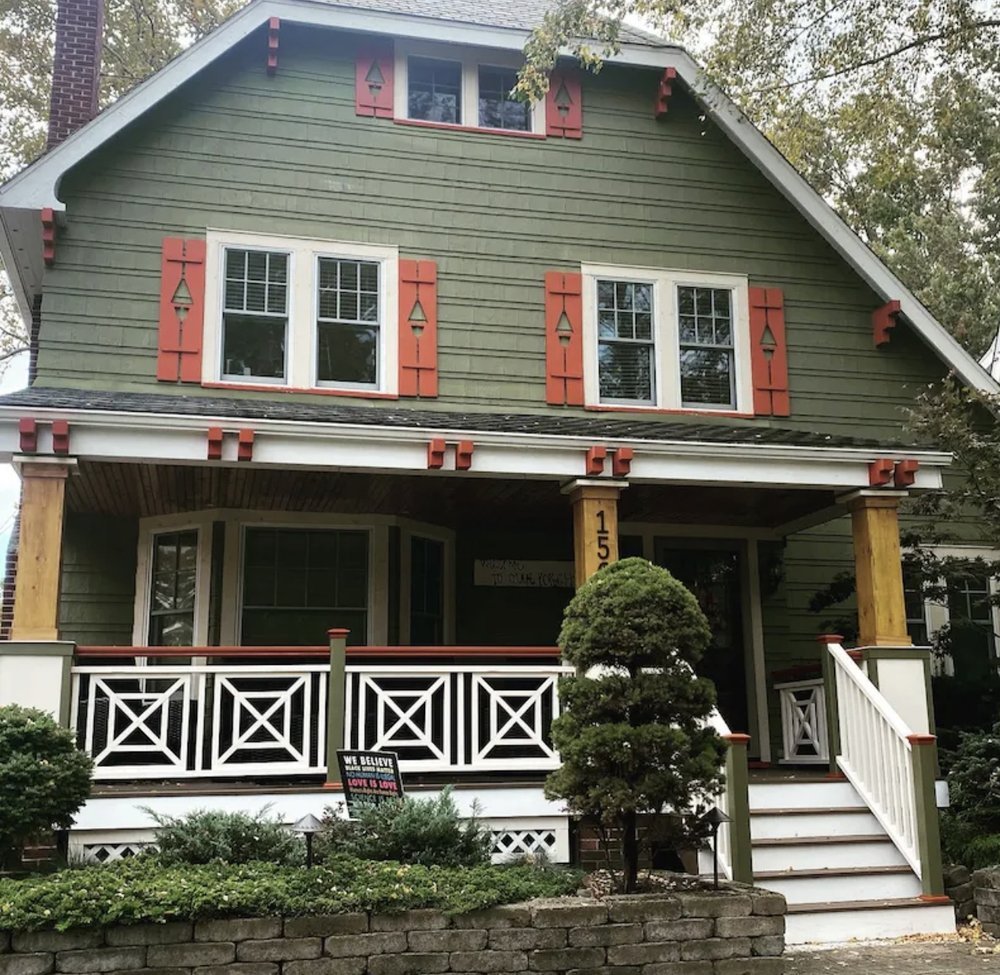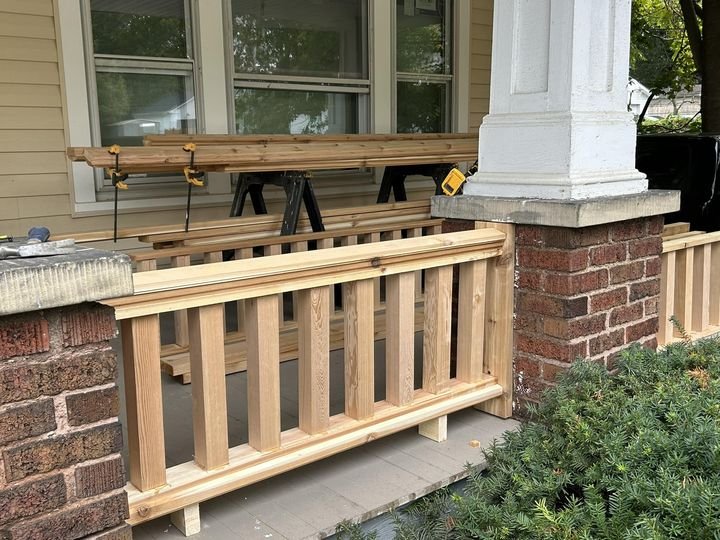
Never paint or replace your porch floor again.
PORCHES | DECKS | PATIOS
-

Westwood Avenue, Lakewood
Practical Renovations uses premium materials so that your porch will last as long as you own your home. We do not use pressure treated lumber as it is prone to warping and shrinking; instead we often use red cedar coated with tung oil, or PVC flooring which will easily last a lifetime with proper care.
-

St. Charles Avenue, Lakewood
If specialty custom fabrication (ie. ornamental railing) is necessary, we can assemble components (rails, columns) in our local wood shop—just about any design is possible as long as they meet current codes and are approved through Lakewood’s Architectural Board.
Ornamental railings (as shown) must meet current ICC standards.
-

Summit Avenue, Lakewood
In the early 20th century, ballustrades were often delivered by railcar and assembled on-site with the same materials to match the look of the rest of the home. Few builders can offer exact replication of these architectural features, and we are proud to to be one of the several that do.
Lakewood Building and Housing allows for under 34” railing height for apples-to-apples replacements.
A note from the owner regarding Lakewood front porches…
It’s no secret that front porches on homes here in Lakewood, OH are suffering. They’ve seen the elements; snow, rain, wind, and now tornadoes! Although excellent materials were used to build porches in the early 1900’s, the framing (support) that was used was also under-engineered as most joists were spaced 19-20” instead of 16” apart. That covers the ‘why’, but where exactly do they fail? Most commonly, rainwater collects around the base of the support columns and finds its way through the floor boards, and seeps into the framing directly beneath it, at the front corners of the porch. This causes sagging, sinking, and possible structural issues. Notwithstanding a completely failure, the roof of a front porch is often partially supported by the actual front of the house—in other words, it may take quite some time before something more catastrophic may happen since weight is distributed (albeit unevenly if just one column is failing or sinking). In short, if there looks to be some decay happening here, don’t panic—but exercise caution. Feel free to submit an estimate request below and I’ll stop by to take a quick look at it and let you know what best course is.
There are a lot of porch flooring products on the market—some are real wood, some are synthetic (composite, PVC). The first thing to remember is that porches are normally built with tongue-and-groove style flooring boards. They lock together when they’re installed, and there’s no spaces in between them. Most Lakewood front porches are intentionally pitched so that when it rains, water flows off the front of your porch and away from your house. Decks, unlike porches, normally have wider (6-inch) boards and are installed with a small space between them. TREX is a common name that people think of when talking about flooring for decks. We won’t touch on that because putting that style of flooring on a front porch is not meant for that application.
Lakewood houses were mostly built in the early 1900’s to the 1920’s. Southern yellow pine, tongue and groove porch flooring was installed in that time period on almost all Lakewood homes. The wood floor boards are usually 8-10 feet long, and 3-1/6” wide, and are installed perpendicularly to the front of the house. Unfortunately, southern yellow pine grown today will decay much faster than the same species of wood that was installed back then. The only way to make it work is to prepare the wood by preparing it, staining it, and applying multiple coats (four coats, maybe five) of sparuethane (the ‘outdoors’ version of polyurethane). It’s a long and expensive process if you want it to last for a very long time.
The best alternative (by a mile) that I’ve found is AERATIS HERITAGE porch flooring. It is indeed made of PVC—but it looks incredibly similar to how southern yellow pine porch flooring looks to make it historically and aesthetically identical to the look of 1920’s Lakewood porch floors, and it will never be affected by rain and the elements. It’s tongue-and-groove, and is installed using the same method that old porch floorboards were installed using a flooring cleat nailer with stainless steel cleat nails (you don’t see them as they are driven through the ’tongue’ side of each board).
The quotes we provide accounts for both the installation and material cost. I can also stop by and give you a sample of it if you’d like. But in my years of experience in installing a lot of Lakewood porches, this product is bar-none the best I’ve been able to find in terms of historical accuracy and longevity—and the cost is comparable to many other ‘composite’ or synthetic porch floors.


